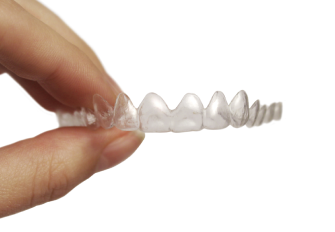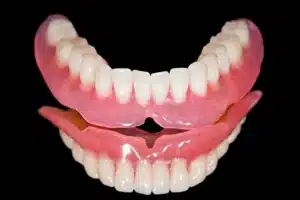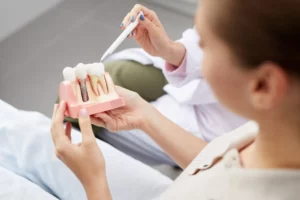Aligners, such as those used in treatments like Invisalign, are a popular choice for orthodontic correction due to their discreet appearance and removable nature. One of the most common questions among those considering aligner treatment is whether wearing aligners is painful. The answer to this question is nuanced and varies from person to person. Remember that the aligners are moving your teeth into a new position; if you feel a little pain or discomfort, it might just be your teeth adjusting and shifting into their new position. Some people only experience pain for a few days, while others may experience it throughout their treatment. During this adjustment period, it’s not uncommon to experience some level of discomfort or soreness. However, it’s essential to distinguish between discomfort and significant pain.
Why Do Aligners Hurt?
Aligners, such as those used in treatments like Invisalign, are designed to gradually move your teeth into the desired alignment. While they offer a more comfortable and discreet alternative to traditional braces, it’s not uncommon to experience some discomfort during the adjustment period. Here’s a closer look at why aligners might cause discomfort:
Initial Adjustment:
When you first begin wearing aligners, your teeth and gums aren’t accustomed to the pressure exerted by the trays. This initial adjustment period can lead to soreness or discomfort as your mouth adapts to the new sensation.
Tightening:
Throughout your treatment plan, your aligners will be periodically changed to continue the teeth-moving process. Each new set of aligners may feel tighter than the previous ones as they apply additional pressure to shift your teeth into the desired position. This tightening sensation can cause temporary discomfort until your teeth adjust to the new level of pressure.
Pressure Points:
Certain areas of your mouth may experience more pressure from the aligners than others. For example, if a particular tooth requires more significant movement, you may feel increased discomfort in that specific area. This localized pressure can result in discomfort or even sore spots on your gums.
Soft Tissue Irritation:
The edges of the aligners can sometimes rub against the soft tissues of your mouth, such as your cheeks, lips, or tongue. This friction can lead to irritation or even minor cuts, causing additional discomfort during the initial stages of treatment.
Understanding why aligners might cause discomfort can help you anticipate and manage any potential pain or soreness that arises throughout your orthodontic journey.
When Is the Pain A Concern?

Persistent Pain:
While it’s normal to experience some discomfort, persistent or worsening pain that doesn’t improve over time may indicate an underlying problem. If the pain continues for an extended period, despite following recommended care instructions, it’s crucial to seek advice from your orthodontist.
Sharp or Severe Pain:
While mild discomfort is common, sharp or severe pain could be a sign of a more serious issue, such as a misaligned aligner or dental problem. If you experience intense pain that interferes with your daily activities or doesn’t subside with over-the-counter pain relievers, contact your orthodontist promptly.
Difficulty Eating or Speaking:
Discomfort from your aligners may make it challenging to eat or speak normally, especially during the initial stages of treatment. However, if the pain significantly impacts your ability to perform these essential functions or persists despite your efforts to alleviate it, it’s essential to consult your orthodontist for further evaluation.
Visible Damage:
Inspect your aligners regularly for any signs of damage, such as cracks, chips, or warping. Damaged aligners not only compromise their effectiveness but can also cause discomfort or injury to your teeth and gums. If you notice any visible damage to your aligners or teeth, contact your orthodontist immediately for assistance.
Monitoring your pain levels and being vigilant for any signs of concern can help ensure that you receive timely intervention if any issues arise during your orthodontic treatment journey.
5 Effective Ways to Reduce Pain From Aligners
Experiencing discomfort from your aligners is a common part of the orthodontic process, but there are several strategies you can employ to minimize pain and discomfort effectively. Here are five effective ways to reduce Invisalign pain:
Use Orthodontic Wax:
Orthodontic wax provides a protective barrier between the edges of your aligners and the soft tissues of your mouth, such as your cheeks and lips. Applying a small amount of wax to areas where you experience irritation can help alleviate discomfort and prevent further irritation.
Take Over-the-Counter Pain Relievers:
Non-prescription pain relievers, such as ibuprofen or acetaminophen, can help alleviate any discomfort you may experience from your aligners. Follow the recommended dosage instructions on the packaging and consult with your healthcare provider if you have any concerns about taking pain medication.
Switch Aligners at Night:
Start wearing a new set of aligners before going to bed. This allows your teeth to adjust to the new aligners while you sleep, minimizing any initial discomfort or soreness. By the time you wake up, your mouth may have adapted to the new aligners, making them more comfortable to wear during the day.
Use Cold Compresses:
Applying a cold compress or ice pack to the outside of your cheeks can help numb the area and reduce inflammation, providing temporary relief from pain and discomfort. Wrap the cold compress in a thin cloth or towel to protect your skin and apply it to the affected area for 10-15 minutes at a time, as needed.
Follow Proper Oral Hygiene:
Maintaining good oral hygiene habits, such as brushing and flossing regularly, is essential for keeping your teeth and gums healthy during orthodontic treatment. Proper oral care can help prevent additional irritation and discomfort caused by food particles or plaque buildup around your aligners.
Ready to Transform Your Smile? Contact Normandale Dental Today!
If you’re ready to embark on your journey to a straighter, healthier smile with aligners, Normandale Dental is here to help. Our experienced team specializes in personalized orthodontic care, guiding you through every step of the process with compassion and expertise.
Don’t let alignment discomfort hold you back from achieving the smile you’ve always wanted. Contact Normandale Dental today to schedule your consultation and take the first step towards a confident, radiant smile.





